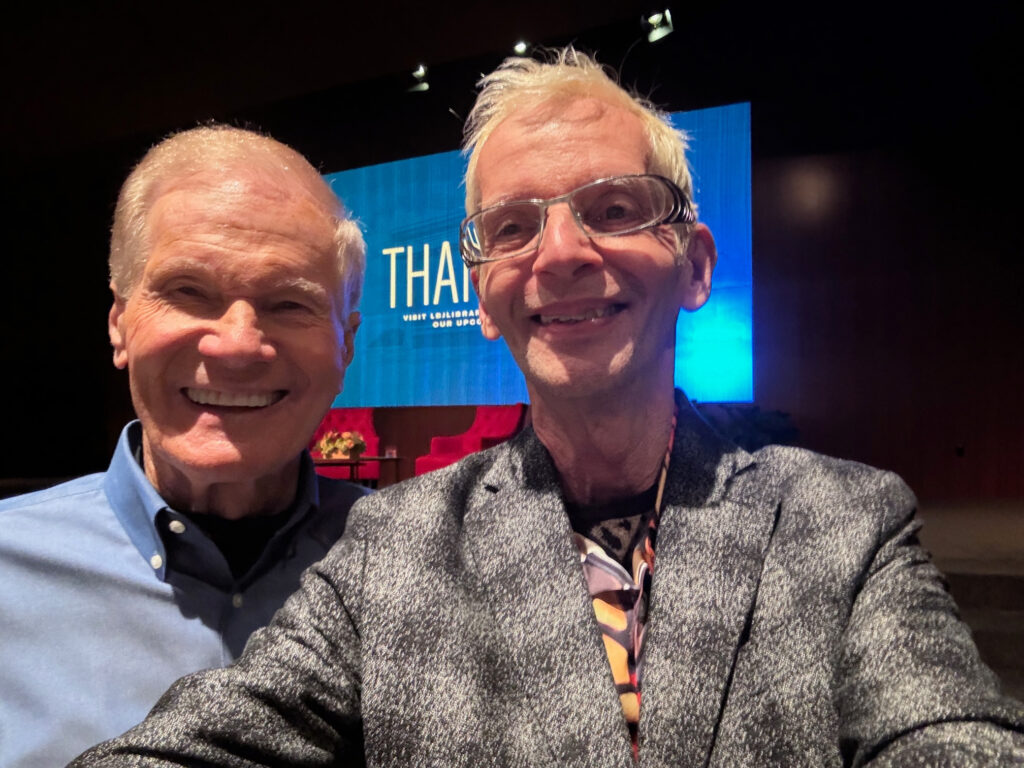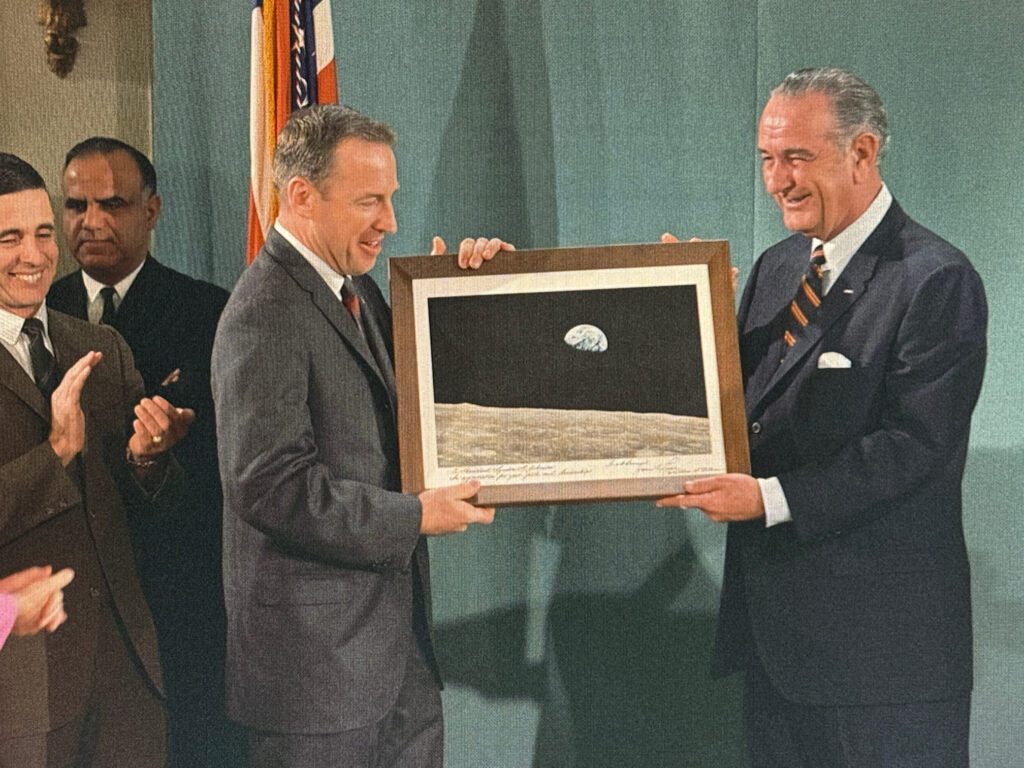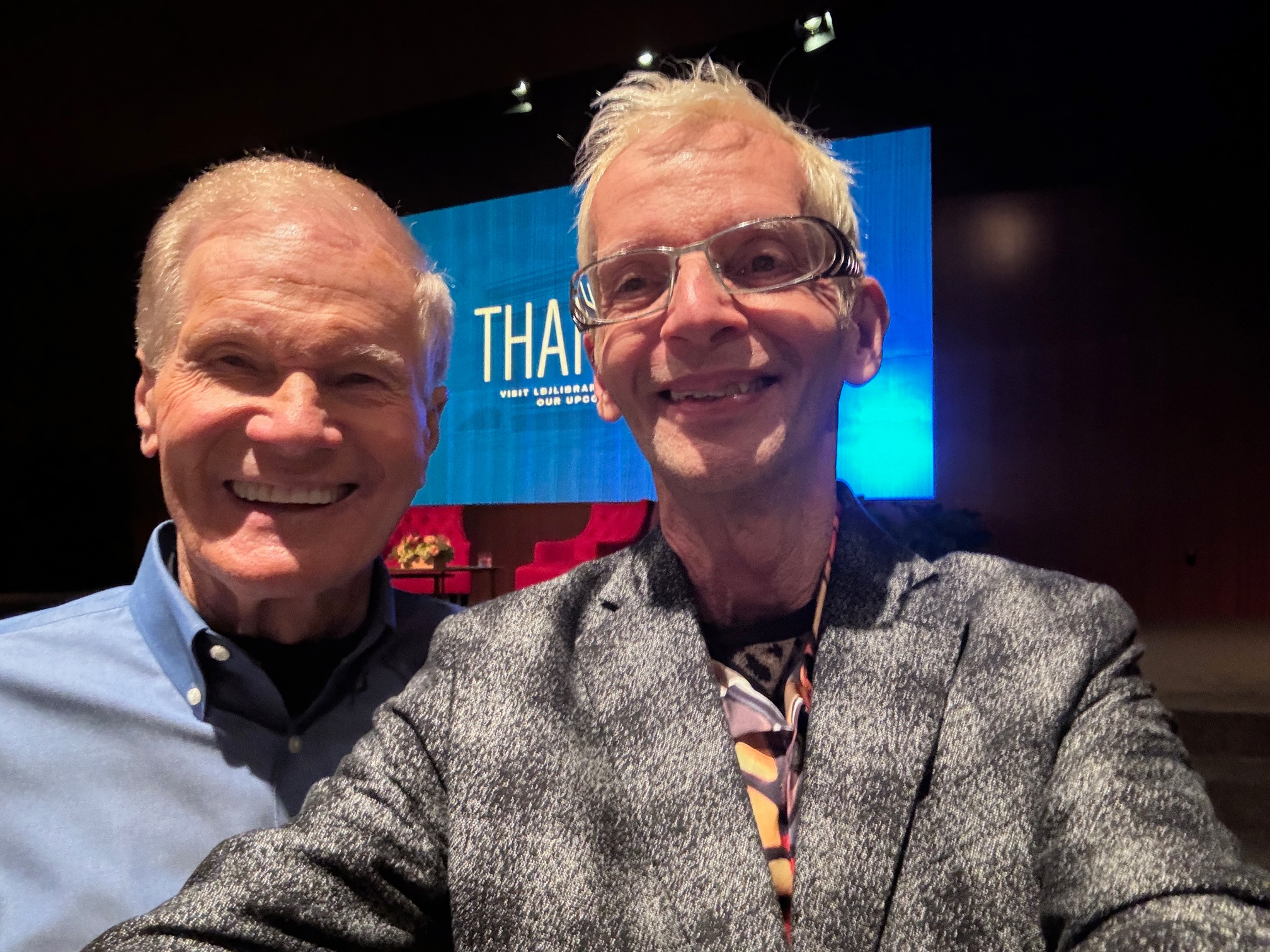Pres. Lyndon Johnson oversaw the Apollo space program during his term of office in the 1960s. The current Administrator of NASA, Bill Nelson, was at the LBJ Library in Austin this week to reminisce about those days.
Nelson said that Johnson’s influence on “shaping the space program is still felt today.” Before Pres. Kennedy made a commitment to landing humans on the Moon, “Johnson had prepared a lot of the ground because as Majority Leader of the Senate he had really shaped the future by passing in 1958 the Bill that set up NASA. Johnson was quite concerned about what the Soviets were doing: he was all over that.”

Nelson titillated the audience by saying “I’ll tell you some of the sneaky things he did as Vice President in taking a lot of the activity away from Cape Canaveral. As Sen. George Smathers of Florida said ‘I turned around and half of it was already taken by Lyndon.’ And then as President he pushed ahead, and before he left office, he was able to see us orbit the Moon on Apollo 8 in 1968.” The photo shows him admiring the famous Earthrise photo taken by astronaut Bill Anders at that time.
Nelson was joined on stage by former Texas Senator Kay Bailey Hutchinson. Over many years in Senate, they worked together on funding bills for NASA. When Sputnik was launched in 1957, “LBJ said ‘Oh my God, now this is really big. We can’t let Russia have a technology edge.’ His exact quote was ‘Who controls the world is who controls space.’”
Hutchinson told of the background for Pres. Kennedy’s famous speech that committed the nation to the manned lunar program before the end of the 1960s. “Johnson was the chairman of the NASA Advisory Council (an arm of the White House). He had all of the studies done, and wrote a memo to Pres. Kennedy that we can do this by the end of this decade. That’s when Kennedy said, ‘I’m going to make the speech, we’re going to do it!’”
Nelson said that “The real space enthusiast was Johnson. Kennedy realized the strategic goal that we could not let the Soviets master the High Ground. He looked at it as a space race, not unlike we’ve got another space race today with China. We should be landing on the Moon before them, but they’ve got a very aggressive program. Kennedy understood that America needed a higher calling – a purpose.”

Speaking of Johnson’s early support for space, Nelson related that “Johnson was not a Johnny-come-lately. He had done all these things back in the 50s when he was the Majority Leader, the Master of the Senate. He made himself chairman of the newly-created committee on space, and the result of that was the bill that set up NASA. As he became president, he implemented but he always gave Kennedy credit for having had that vision of going to the Moon by the end of the decade.”
On the Texas connexion, Hutchinson said it was “a neutral decision that as we were building on what Kennedy and Johnson started that we needed to have a separate place where the astronauts could be trained – where they would build the whole system to go into space. For all of the different factors, the Houston area was chosen. It was Sen. Lloyd Benson who introduced the bill to name it Johnson Space Center.” While it was dedicated when Johnson was still alive, it was called the Manned Spaceflight Center at first.
Looking forward, America is planning to return people to the Moon in 2 ½ years in the Artemis program, named for the twin sister of Apollo. But things are happening right now. “Within a couple of weeks,” Nelson said, “a commercial lander will launch atop a Space X Falcon Heavy rocket. If it lands successfully at the South pole, it is the precursor to a number of these commercial landers that will act as scouts for us then to send humans to the South Pole.” At that location is water in the form of ice. With water, “we have hydrogen and oxygen, so we’ve got rocket fuel. We could have a gas station on the South pole of the Moon.”
The use of the Moon for resources and study is part of U.S. foreign policy: our soft power. The new Artemis Accords that govern the future are a common sense set of principles that follow up on the Outer Space Treaty: that’s another Lyndon Johnson accomplishment. In 1967 he oversaw the passage by Congress of the Treaty. It is a declaration of the peaceful uses of space.”
Lead photo:
Administrator Bill Nelson, left, with Dr. Cliff Cunningham
Photo:
Apollo 8 astronaut Jim Lovell presents President Lyndon Johnson with an inscribed photo of “Earthrise” in 1969. (National Archives)
For upcoming events at the LBJ Library go to this link:
https://www.lbjlibrary.org/events
There is page on the Presidential Library website showing Johnson with astronauts:
https://www.lbjlibrary.org/object/photo/sen-lyndon-b-johnson-and-us-astronauts
The Official White House Historical Association website has this tribute to Johnson’s support of NASA:
https://www.whitehousehistory.org/lyndon-b-johnson-forgotten-champion-of-the-space-race
